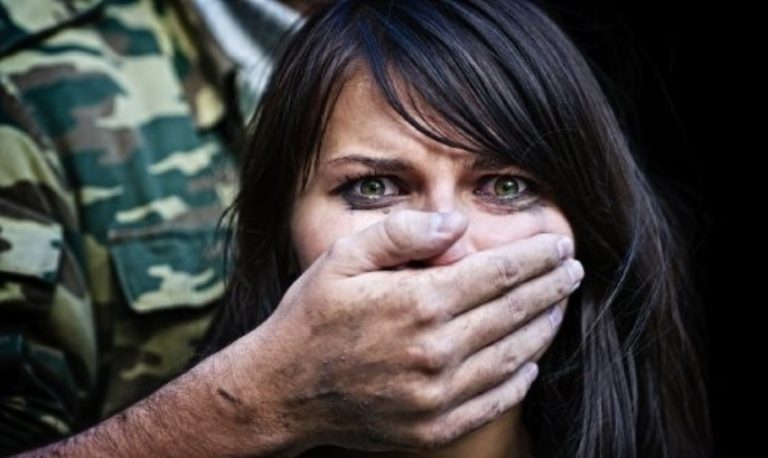Women and men both commit, and are victims of, crimes but are their perspectives, understandings and interpretations of crime (either as victim or perpetrator likely to be different)? How and why – or even if – is a matter of debate; theorising on these matters is difficult depending on the perspective of the researcher.
Men and women also commit violence but their motivations are likely to be different; men may do so to assert their dominance over a situation, a territory, or person; to ensure that their masculinity is not in doubt. Women may do so in defence of their children, themselves, family, friends and perhaps even their property. However, if women are becoming as violent as men for the same reasons as men, does this mean we are moving in a direction which is irreversible? Would such a trend, if it truly existed, necessarily be a perilous one? More importantly, why does the notion of women becoming violent (or becoming more violent) cause such consternation in society whilst violence by, and towards, men is accepted as part of their masculinity?
Women are statistically less likely to commit crimes, particularly crimes of violence; however, numbers of women being arrested, cautioned and imprisoned for violent offences are rising. Media reports and government statistics all appear to show that women are increasingly involved in crime, particularly violent crime. In England and Wales, the number of females in custody was 4,445 (24 November 2006) with the highest number being attributed to drugs offences whilst violence was second. In Scotland, the figure was 326 (24 November 2006), though ambiguous as it does not specify the gender of (i) ‘lifers’ who have been recalled (ii) those convicted but awaiting sentence/deportation (iii) those under sixteen years of age. Williams states that, in a nine year period, there was a rise of 140% for female offenders incarcerated (1993-2001) despite the fact that offending rates remained relatively stable. In the United States, figures show that although incarceration rates were rising, violent offences by women were going in the opposite direction; women’s involvement in violent offences showed a minimal rise (from 10.8% to 12.3%). This may, however, be reflective of changes in recording, prosecuting and incarcerating female offenders rather than any actual increase in the rate of female offending itself.
Violence is often fuelled by substance abuse, via alcohol or drugs or both and this is the case both for men and women. Males perpetrate the highest numbers of crimes, violent or otherwise, and they also account for the highest number of victims of violent assaults; women, however, as perpetrators of violent crimes in particular are on the however women are apparently working hard to catch up. Certainly, the media portrays young women as being ‘as bad as boys’ when it comes to violence, particularly when fuelled by alcohol; city centres across the UK have a large problem with violence but this is possibly due to an increasing culture of binge-drinking. Indeed, as recently as December 2006, reports of violence fuelled by alcohol were in the news again; this time, however, the focus was not the violence as such, but that the perpetrators of the violence were female.
A BBC article quotes Dr Jon Cole of Liverpool University who believes that, whilst it does not cause aggression, alcohol stops sensible choices being made “You make the easiest choice, which is often aggression”. The same article refers to a study by The Glasgow Centre for the Study of Violence which showed that women were involved in almost half of all the pub fights observed. Further, medical research shows that testosterone levels in women rise by fifty percent in females, but is lower in males when they become drunk.
Violence however is a term which can be interpreted in many ways: one particular study shows females’ understanding and interpretation of violence is unusual (see Burman below). There are accepted definitions of violence or aggression: crime is “an action which constitutes a serious offence against an individual or…state…”; violence: “behaviour involving physical force intended to hurt, damage, or kill; strength of emotion or of a destructive natural force”. Aggression: “hostile or violent behaviour or attitudes; the act of attacking without provocation…”.
In the study undertaken by Burman et al, verbal abuse and the spreading of rumours was seen as ‘violent’ or more aggressive than physical violence (such as being punched). If verbal, rather than physical, violence causes more concern girls, should we take this as an indication that girls consider violence to be a psychological rather than physical problem? Why do some girls have a greater fear of violence which is spoken whilst most people, and particularly boys, are more inclined to class violence as a physical assault?
Fear of violence is often more potent as it is the ‘unknown’; the precise time and place of being the recipient of violence is unknown with domestic violence victims, but they are kept on alert because they know it is going to occur at some point. However, from a legal point of view, violence and violent crime, is where physical injury is inflicted and only in recent years was psychological trauma accepted as a ‘violent offence’ (see Protection from Harassment Act 1997).
Given the low numbers of women who offend, both historically and in recent times, it is unsurprising that studies into female criminality were either ignored or undertaken in relation to their interaction with, and response to, male violence and criminality. It is also unsurprising that female criminologists found the need to fill this gap. In the past, women were classified into two types: mad or bad. Most female offenders convicted of violent crimes were seen as women who fought back against domestic violence or who protected their children; others were considered ‘evil’ and historically, were considered witches or concubines of the devil. We may now have a better understanding of criminality, but this has not stopped the ‘bad’ or ‘mad’ viewpoint from being represented by the media, the public and in some quarters of the criminal justice system when females are involved.
Women are viewed as more deviant than their male counterparts as they have not only offended against the criminal code but also against social convention. Whereas social rules and convention have changed over time, women are still considered to be mothers, wives, lovers and workers but not offenders; rarely do we expect women to commit violent offences. Those who do are vilified for years possibly serving longer terms than male counterparts, particularly when they offend against those they are supposed to protect.
Myra Hindley and Beverley Allit both murdered children; Allit did so as a nurse so could be again seen as doubly deviant as her occupation – as well as her gendered role – was one of carer.
It is difficult of course to do a proper comparative analysis without knowing the details of the ‘violence against the person’ offences committed by both men and women. There are a number of ‘assaults’ committed by women which may well not have been prosecuted had they been committed by men; it is impossible to say without knowing more about both the offence and the offender (regardless of gender). Obtaining goods for sale (to provide money to pay bills/food) or obtaining goods – such as shoplifting food/clothing is more common among female offenders than males. Analysis of current statistics shows that the highest number of female offenders committed ‘drugs offences’ with the second highest being for ‘violence against the person’ followed by ‘theft and handling’. For many, women who commit violence do so mainly in self-defence or protection of a child; females are not seen as inherently violent. But is this perception false or misleading?
Most studies of the culture and phenomenon of gangs tend to focus on males (though some do mention ‘girl gangs’ or girls in gangs as a peripheral but distinctly intricate part of a predominantly male gang). However, a problem arises which is twofold: firstly and perhaps obviously, not all female offenders – violent or otherwise – are in gangs. Secondly, there is a danger that the study will produce results more likely to provide an insight into gang culture rather than any comparative study of female and male criminality.
Current statistics show the highest number of female offenders committed ‘drugs offences’ with the second highest for ‘violence against the person’ followed by ‘theft and handling’. For many, women who commit violence do so mainly in self-defence or protection of a child; females are not seen as inherently violent. But is this perception false?
One of the possible reasons behind women committing fewer ‘serious’ offences could be their role as mother/carer. Given that a large proportion of children are either brought up by single mothers or by mothers due to fathers working longer hours (or being the sole breadwinner) women generally have the main, if not sole, responsibility for child rearing. Therefore, the ability for women commit crimes – unless they left their children elsewhere, or were childless – was severely restricted. The risk of being caught and sent to prison – and violent offences generally attract higher tariffs – meant that any benefit of committing a crime seemed unattractive. Of course, this assumes that women who commit offences chose to do so for pragmatic/rational reasons; classicists will be jumping for joy!
In terms of victimisation, women are largely accountable for rape or other sexual assaults but even here the amount of disproportionate statistical analysis is difficult given that male rape and male sexual assault is under-reported and (in some countries) legally ignored. Stigma attached to victims of sexual assault is horrendous for female victims but this is more so when victims are male. This is largely due to men being perceived as (i) the aggressors or (ii) physically able to fight off an assault.
In England and Wales, legislation is quite specific in terms of the crime of rape in that a penis must be inserted into either a vagina or the anal passage (or mouth); so whilst a victim may be either male or female, the perpetrator must be male. In Scots law, the act of rape can only be committed by a man on a woman; male on male sexual assault is just that – sexual/indecent assault but not rape. Where victim and perpetrator are one and the same (e.g. an abused wife retaliates against her husband) there are inconsistencies between the genders. According to CEDAW, women are more likely to ‘to be killed than to kill’ but the legal system discriminates; women who kill their [often abusive] husbands are convicted of murder whilst men who kill their wives are convicted of manslaughter. Thus, if convicted of murder which women are, the only sentence available is life; even when convicted of murder, men and women are still treated differently with tariffs higher for women than men.
Male perpetrators may be more selfish in their approach to crimes; committing offences which are directly of benefit and which give an immediate sense of gain. In violence, men use violence as a first, rather than last resort, as it on two levels it gets them what they want: the first is the object of their attention, the second is status and self-belief in their own ability. Violence for many men seems to be a way to [re]assert their masculinity. Violence committed by women – on the whole – appears to be a last resort; there was no other way to get either in or out of a situation and thus violence was used.
Of course, there are criminal couples: men and women who work together – though not necessarily in harmony – to make financial and other gains. Prostitutes have for many years used (and been used by) male pimps. The men offer protection, security from harassment whether this is from other working women, volatile clients and other pimps who want to ‘muscle in’ on the money earned by the prostitute.
The pimp will use violence as a means of asserting his status has being in control of both the woman and the environment within which they work. Of course, the prostitute herself is committing a criminal offence in soliciting on the street and may herself use violence against her client and other working women. The implied consent that women give to men who pimp them is that violence is acceptable: they will not want nor like the violence used against them but most accept it as part of their lives and also want the volatility of the pimp to be known to others as a way of protecting themselves from other females and clients.
Theorising about the motivations which drive offenders, male and female, tends to mean that we encapsulate whole groups of people by defining them on the basis of individual psycho-social profiles. This may be applicable for instances where groups commit crimes on a large scale, over periods of time, such as ethnic cleansing (which often entails the mass slaughter of males and systematic rape and impregnation of females – as seen in Bosnia for example).
Of course, systematic rape of females – and occasionally males – is a form of violence often used by groups of individuals sanctioned by the state (as seen in war situations) and also individuals in a domestic setting (the husband who forces his wife, girlfriend, etc.) and sexual violence is almost unique in that women – particularly in Scots’ Law – are not convicted of rape. There are cases where accomplice of facilitation of rape is conducted by a female against another female but these tend to be rare. One example would be the sexual abuse of young women by Fred West who raped and abused women with his wife; even here, however, the case showed that Fred West has systematically abused his wife and thus she may have complied and committed these acts to reduce her own victimisation.
Crime in general, whether violent or otherwise, may be more easily identifiable as a male characteristic in society rather than female simply because of historical social conventions. Women had to care for their homes and families; opportunities for women to offend were minimal in that they had limited access to places which would allow them to commit crimes. Men, on the other hand, were often the workers, the drinkers, the socialisers (women entertained their friends, but this was often in homes rather than public houses, etc.) and thus opportunity was greater for them. If nothing else, in historical times, the clothing a woman wore would make burglary (e.g. entering a house via a window and then removing goods) quite difficult though perhaps not impossible! Even in more recent times, women were seen to steal for ‘good’ rather than ‘bad’ reasons: they stole food from supermarkets rather than goods to be sold for hard cash.
Those who were caught may cry and reduce themselves to the ‘helpless desperate female’ and an invariably male security guard or store manager, may find himself torn between chivalry or sympathy towards the woman and his job. If a man was caught in the same act of theft, it is possible that (if denial did not work) then aggression would result in a negative reaction from staff and thus prosecutions of males were more likely.
Given that males generally appear to be more confrontational – and this may be anthropological in origin – whereas woman appear to take the path of least resistance, it is possible that perpetrators of crimes (particularly non-violent crimes) are likely to find that their gender reflects their culpability in the eyes of the law and any enforcement officers.
Over the last few years, and in particular in relation to younger offenders, females are less likely to be able to use their gender to escape punishment (though there may be some instances were this still applies, for instance speeding in cars). Whereas historically women might have been viewed as immoral, but not necessarily criminal, recent years have seen a shift so that they are not only immoral but most definitely criminal and thus should be treated equally by the criminal justice system. Inevitably, however, the public will view the criminal female as more criminal or more deviant than her male counterpart.
Women may also have a more pragmatic approach to criminal activity, violent or otherwise. It might be that they are more careful about exposing themselves to temptation for certain crimes (such as theft, fraud, etc.) or are so careful that they may go undetected. Men may well approach crime with a more arrogant attitude and feel their ability to escape detection is greater than male or female counterparts.
What theories therefore can be applied, if any whether partially or wholly, to violence and the men and the women who use it? It is difficult to state which ‘criminological theory’ can actually be applied completely to criminality without being considered either aligned to one discourse or another even if the intention is to avoid this. It may be impossible to apply the same theories of criminality for men and women given that attempts thus far have failed to provide any conclusive answer into the causation of criminality in female or male crimes.
The problem with analysing the comparison between male and female offenders is that whilst their motives might appear different, this is not necessarily the case. Influences such as biology, psychology, economic and education as well as society in general will have an impact on each individual’s behaviour and their understanding of what is acceptable. Violence is so often used as a means for dispute resolution – particularly in the younger generation – that we may be on an irreversible path.
As seems common within criminology, in order to explain criminality, attempts are made to encompass causation with one particular ideal or theory; it is due to this attempt to treat theories as mutually exclusive which results in failure.
Women are different in terms of their responses to crime and in particular violence, their use of violence against others and their understanding of violence and crime in general. Women have been dominated for so long and now they choose to fight back, they are regarded as more dangerous. They are altering perceptions held over a long period of time; that is not to say women will turn into Amazonian women ready to dominate the world and make men submissive creatures! However, if we – as women – want equality, it seems we have to fight twice as hard (even if that fight turns physical).
The criminal justice system now deals with far more women offenders than previous decades, but this is also likely to be in part attributable to the medicalisation of female offenders in the past. Now that this is no longer the case, women are identified as criminal not [mentally] ill and thus greater numbers are being included in criminal offending statistics. Greater reporting to the police, due to insurance requirements among other things, means that whereas those offences which may have been overlooked for being petty no longer are treated as inconsequential.
Whether one looks at the lack of implementation of equality for women, or whether men’s masculinity is eroded by women’s empowerment, whether abuse victims abuse others so they can gain control and power over another, many individuals commit crimes for reasons understood only by them – and perhaps not even then. Theories of crime, causation and criminality will be at ever increasing odds as elements of classicism, positivism, strain theory or a ‘pick-and-mix’ approach to all three are rejuvenated depending on the year or decade.
Advances in sciences (natural and social) may also play a part in the future of how criminality is considered; genetic or even social predisposition for criminality is not something which is seen on the movie screen, it is a reality which will be hitting us very soon if indeed it has not already done so.
Indeed, September 2006 saw the Labour Government publish their plans to improve families’ potential for achievement by the possible local or even governmental intervention for ‘problem families’. Critics were reported as fearing that the Government was entering the dangerous field of eugenics (so fatally but effectively seen during the Holocaust) or by creating ASBOs for children who were yet to be born on the basis of their parents’ socio-economic status.
Where does this leave the field of criminology? Governments may look to criminologists and other social scientists to address the question of crime and criminality and causes thereof but they may give limited terms of reference for research projects.
Criminology seeks to provide a definitive, exact answer to an inexact and (at times) inexplicable question: why do people (whether male or female) commit crime? Perhaps this is its failure and why, despite a growth of writers on the matter, nobody has arrived at an answer (which I argue is not possible in any event). Sociological, economical, psychological and biological factors all have to be considered and taken into account when dealing with any offender, male or female. Many treat criminal causation theories as mutually exclusive.
Criminological theory – even when considering all the elements therein – seeks to find a definitive answer where it is likely that none exist. Lack of a definitive answer, however, does not necessarily mean criminology has failed; it needs to evolve again. Perhaps for criminological theory, answers to questions are as fluid as the times in which they are considered. Evolution of criminology and the theories therein mean criminologists will have to choose the most logical and pragmatic elements, and discard elements which are obviously flawed (whether in whole or in part). This may be the way forward.
















